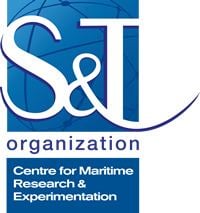Abbreviation CMRE Purpose Maritime security Official language English and French | Legal status Treaty Founded 1959 Type of business Military research | |
 | ||
Region served 28 nations in Europe and North America | ||
Previously known as NATO Undersea Research Centre (NURC), the Centre for Maritime Research and Experimentation (CMRE) is a scientific research and experimentation NATO facility that organizes and conducts scientific research and technology development, centered on the maritime domain, to address defense and security needs of the Alliance. It is an executive body of NATO's Science and Technology Organization (STO).
Contents
Research Areas
CMRE conducts projects in the following major research areas:
Organisation
CMRE employs scientists and support staff from NATO member nations. Scientists rotate through the Centre on a contract basis with a fixed time limit (typically 3 years with a possible 2-year extension).
The current Director is Dr. Dirk Tielbuerger. The current Deputy Director is Andrew Pickup. The Chief Scientist is in charge of the scientific programme. The current Chief Scientist is Edward C. Gough.
Facilities
CMRE has two ships for conducting NATO research: the NATO Research Vessel (NRV) Alliance and the Coastal Research Vessel (CRV) Leonardo. The NRV Alliance is a 93-meter ship commissioned in 1988. Its double hull and propulsion system make it one of the quietest research vessels in the world. The smaller CRV Leonardo, commissioned in 2002, was designed for conducting experiments in shallower waters. In addition to supporting NURC’s scientific mission, the two vessels are chartered to commercial or government organizations within the NATO nations.
CMRE has specialized facilities and equipment for research at-sea, including a fleet of AUVs and other unmanned vehicles and instrumentation, linear array assembly facilities, and the Oceanography Calibrating Laboratory, which provides instrument calibration according to the World Ocean Circulation Experiment (WOCE) standard.
